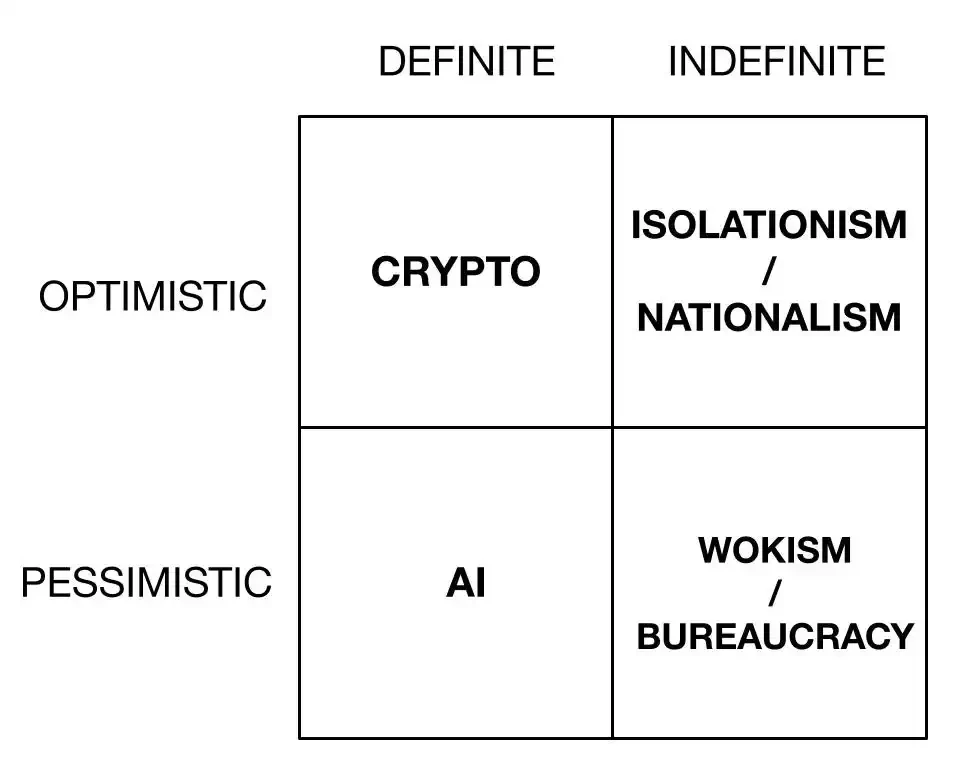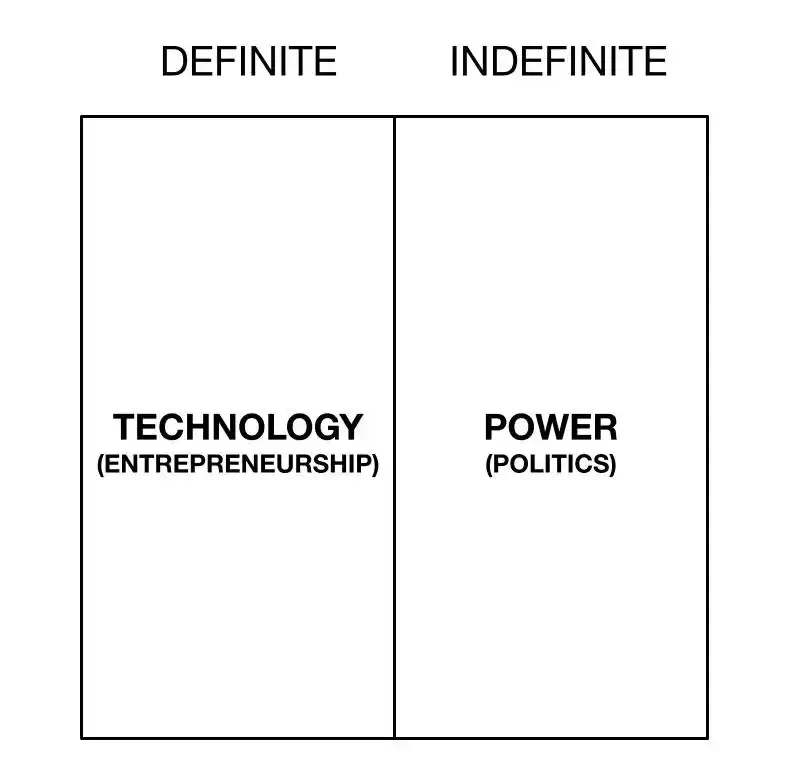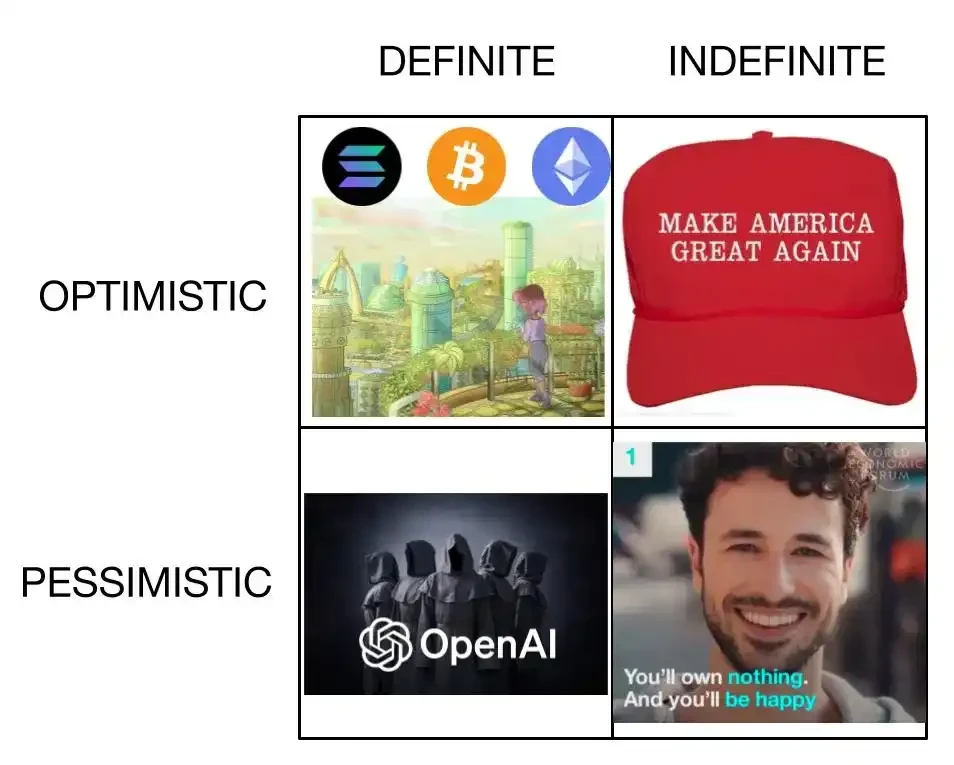Original title: The Optimistic Crypto Pitch
Original article by: Matti, Zee Prime Capital
Original translation: 0x26
Editors Note: The development of cryptocurrency has entered deep waters. The importance of cultural and social attributes has been further enhanced. Technology can hardly become a real moat. New terms and narratives have received far more criticism than support.
Faced with these sudden changes, many veteran players feel uncomfortable and even shout that cryptocurrencies are finished. But as community members said, firm belief is the only way out, which is why few people succeed. Mattis article The Optimistic Crypto Pitch explains why we can still believe in cryptocurrencies. The following is the full text of the article, compiled by Rhythm:
Cryptocurrency has different definitions in the eyes of many people: some people think it is a luxury for geeks, some people think it is monetary anarchism, and some people even call it a ridiculous scam. Todays crypto industry has moved away from the original libertarian dream and is no longer a small circle of only Satoshi Nakamoto and a few cypherpunk computer scientists. Cryptocurrency has undergone a process of entrepreneurship and has become more ideologically diverse.
In fact, the biggest enemy of cryptocurrencies is not the skeptics, but those who dare to tamper with the Bible. Bitcoin supporters don’t like Ethereum believers, and Ethereum believers don’t like Solana advocates. There is a reason for my exaggeration here. It is usually the most intolerant minority that is the loudest. But the conflict is obvious – not a fight between insiders and outsiders, but a fight between different currencies.
Talk of conflict doesn’t sound optimistic, but it just shows how this subculture mimics religious conflicts of the past (and present). If crypto is a religion, it’s one centered on a revolution in money, finance, and commerce. Gods are fungible, narratives are flexible, and financial expectations are scalable. Crypto replaces “in God we trust” with “in our coins we trust.”
رجائیت پسندی
The optimism I am referring to is a persons understanding that he has the potential to change the world and accepting this, thereby drawing strength from his innate nature.
Optimists are inclined to experiment and take risks for themselves. They love freedom and hate tyranny. But when optimists hate something, they pay the price. They bet right because they know, as Celina writes, “When people can hate without risk, their stupidity is easily aroused and the motivation to intensify hatred will appear on its own.”
The Optimist does not feel the need to rule on behalf of others, he understands that he will often make mistakes, but tries anyway. He seizes opportunities to explore, create, and rebuild the world in his own image. The Optimist understands that expanding knowledge is the rope of life that enables his descendants to discard old ideas and follow new ones.
Optimists understand that resources are not limitations but opportunities, because ideas give power to resources and use the surrounding environment to their advantage. Optimists accept change and believe that change is necessary to move forward.
How does this optimism tie into the pitch for cryptocurrencies? Cryptocurrencies were originally born out of the deep optimism of a man who could envision a world where governments no longer controlled monetary affairs.
Its not because governments are evil, its because they are easily corrupted. And its not because people are evil. The longer institutions govern communities, the easier it is for them to hold onto power. After a while, they start to look inward, serving primarily themselves. Why?
Because over time, they become less relevant, their dogma remains static, and the world moves on. But they want to survive. They cling to relevance. Suddenly, the world works for them, and they no longer serve the world. To survive, they need to exert more power at the expense of the interests of the communities they govern.
The original cryptocurrency idea, Bitcoin, was about reducing reliance on power, not relying on violent monopolies, but on immutable code in a network. “A foolish dream.” Yet it worked. This optimistic experiment is now worth trillions of dollars. Today, it’s not just Bitcoin, but much more.
کرپٹو
Cryptocurrency has a very clear ups and downs. The higher it goes up, the more painful it is to come back down. Some of the laws of nature apply equally to financial markets and the human spirit. Cryptocurrency never sleeps, there is always something going on.
Supporters and critics can’t agree on whether meme coins are good or bad, and some succumb to price fluctuations. They also can’t reconcile whether VC coins appear on the market at crazy valuations before or after the release of a minimum viable product.
Investors are jumping from one narrative to another, funding things that either won’t work, can’t work, or even if they do work nobody will use. Most of this stuff will go to zero, completely zero. And that’s okay. “Wait, I came here for the optimistic crypto pitch.”
The medium is the message. Meme coins are a medium, cryptocurrency is a medium, and human behavior unfolds in new ways driven by new technologies. Zeroing out is part of the game.
It doesnt matter if it goes to zero, because crypto is still the most bullish technological movement in the world. Every technological and cultural revolution invites exploitation, precisely because it is revolutionary. This opens up opportunities for information asymmetry, and people quickly (mis)use these opportunities to their own advantage.
But ultimately, in crypto, people are starting to work on problems, trying to solve governance (albeit failing), trying to build a new internet, trusted neutral payment channels, new physical infrastructure for all sorts of interesting use cases, funding research projects that can’t be funded elsewhere, busying themselves with cultural monetization, becoming rich before launching a product that is used by a thousand users, building casinos that become alternative financial products, trying to build new cities and defying death. Much of this is probably misguided. But it shows the great spirit that crypto has to offer.
Cryptocurrency is the Wild West meets Las Vegas, a frontier where you can get rich overnight, but it’s more likely you’ll lose it all and get scammed by sex workers. It’s a place where dreams come true, cities are taken, fortunes are gambled away, and conflicts happen every day.
Pessimists and Optimists
For years, I have carried in my head Peter Thiel’s simplified 2 x 2 framework of optimism and pessimism. When you have a hammer (everything looks like a nail to you) Thiel distinguishes between explicit and implicit pessimism and optimism.
He said: “If you view the future as defined, then it makes sense to understand it in advance and to try to shape it… If you expect an uncertain future ruled by randomness, you will give up trying to control it.”
The ambiguous pessimist simply reacts to events as they occur, hoping that things will not get worse… The ambiguous pessimist has no way of knowing whether the inevitable decline will be fast or slow, catastrophic or gradual. He can only wait for it to happen.
The explicit pessimist is obsessed with the ways things will get worse… believing that the future is predictable, but because it will be bleak, he must prepare for it.
The ambiguous optimist sees a better future, but he doesn’t know how to get there. Finally, the definite optimist , sees an improved future, so he plans and works to get there. Here’s a simplified version of my Twitter narrative:

I frame politics and technology as a vertical divide between the clear and the unclear. That’s because politics is not about wealth creation, but about governance and distribution. At best, good politics is an enabler of technology and entrepreneurship. But it does not create the future itself. Technology does. It is the matrix on which society unfolds, the network of information exchange between humans.

The horizontal dividing line is about the role of the individual vs. the collective. Optimists emphasize the foundations mentioned above. It is more about bottom-up change and robustness through decentralization. Pessimists, on the other hand, believe that the world is fragile and want to rely on top-down control to maintain it. Only they can solve the problem through power, so that things will not get worse.
Let’s start with the explicit pessimism of the AI narrative . It’s explicit because it relies on a technological paradigm. Why is it pessimistic? At the center of this narrative are machines, as beings greater than humans themselves. It’s a new interpretation of God, speaking to mortals through chatbots. Centralized algorithms rule everything. We are at the mercy of this technology.
Either it is inevitable death from this powerful being, or maybe we can study the Bible of Alignment (Principle of Congruence). AI as Abrahamic Interpretation (Supreme Being) rather than Artificial Intelligence. Humans become just an object. There is nothing we can do to stop it, only to give in and hope not to be wiped out by this fierce force.
As for the unclear pessimists , they are the woke ones. They believe that everything has been invented and now we can only redistribute it. At the center of this explanation is power. Use power to distribute from the strong to the weak. There is no other way. Capitalism has failed and we can only freeze humanity and rely on the cold hands of bureaucrats to manage, leaving us in a paper straw-like dilemma (focusing on formal correctness while ignoring practicality and user experience.).
Humans are the culprits. Nature is the victim. The poor are the victims. The winners are the perpetrators. The only way is that we all lose equally. Only the promotion of superficial diversity and homogeneity of thought is left, done by those whose rules dont fully apply because they are here to save us from original sin. The world is over, stop using energy for progress because the only progress is miserable equality.
Now for the vague optimists who say “it didn’t work out that way, so we should go back and fix it.” But how? Going backwards is not an option. The path ahead is unknown. Embrace nationalism? Sure, it works for cultural cohesion, but the scale-shifting properties of patriotic individuals can translate into a destructive machine.
The undefined optimist rejects globalist homogeneity and pointless bureaucratic overburdening, but is confused by the shifting new technological realities. It feels threatened and may tend toward small-mindedness. It does not know how to accept technology as a functional matrix for society.
Banning social media? Is that the same as banning the printing press? Reform has already begun, and suppressing it will ultimately be counterproductive. How to take control of ones own affairs and work towards a concrete future?

Unequivocal Optimism for Cryptocurrencies
If you’ve been around the cryptocurrency space for a while, you know it’s a mess. An absolute mess. But the energy behind this chaotic, noisy, and misguided technological revolution is driven by a deep desire to be in control.
It starts with finance, because markets are machines that control resources. If we change the structure, we can direct the flow of value toward things that the baby boomers were afraid to try. They like the status quo, but crypto doesnt. It wants change, but it doesnt rely on just protesting. Its building. Its taking risks. It doesnt want to occupy Wall Street. It wants to liberate it.
Crypto is solarpunk. Crypto is about financial freedom, decentralized cities, and funding scientific experiments. Crypto is the naughty child of disobedience. Naive on the surface, decentralized, trusted neutral money that is free of corruption and political bias is a major technological revolution. It liberates money. It ignores the politics of panic. Does the tyranny of AML and KYC make the world safer, or the opposite?
Cryptocurrency creates a new class of assets that transfer wealth from the existing generation. Housing becomes unaffordable, so cryptocurrencies create new games to bypass the bureaucratic machine that prevents young people from owning anything and advancing. It refuses to own nothing and be happy. It wants to own everything, even if it makes you miserable. But miserable on your own terms.
Yes, we release NFTs that have no value. Yes, we push overvalued tokens on clueless retail investors. Yes, we muddle our lives with techno-jargon. Yes, we fund completely useless stuff. Ultimately, this is innovation. No one promised it would be pleasant.
We took over the digital world, created new rules, started a new game. Its not perfect, but we are on a mission. To embrace the individual and find new ways to do finance and business. These may be wacky experiments, but there is a vision and an understanding that money is the power of change.
We move slowly, one success at a time. Bitcoin. Ethereum. ICO. Uniswap. Solana. What’s next? Bio.xyz? HairDAO? Most will fail in their attempts to charge forward. But the few that survive will have global impact. We embrace the asymmetry of outcomes.
Yes, crypto is the real frontier. You don’t need a bunch of credentials to make a difference in this world. A few lines of code can go a long way. Bad ideas get sent to the moon (and back). But so do good ideas. And we need more of them.
So if you are not in the crypto space you should join us clowns, scammers and pilgrims. There is a lot of money to be made and a lot of fortune to be lost.
We always need new talent to help us get through the tough times. We can’t rely on divine intervention to move forward or we’ll become undefined optimists. We need new ideas and bold execution to remain the most defined optimistic movement on the planet.
It wasn’t the baby boomers buying Bitcoin and Ethereum ETFs, it was the non-coin folks who dared to get to the forefront, who found the inspiration, overcame all odds, and built the spirit that drives crypto forward.
This is the spiritual sequel to Why My Hostility Toward Cryptocurrency Is Not Infinite اور Mars Casino , which you should also read if I haven’t already convinced you that cryptocurrencies are a fruitful endeavor.
This article is sourced from the internet: Why can we still trust cryptocurrencies?
Binance Coin BNB is the first to break the historical high market value of over 100 billion US dollars Binance Coin (BNB) has surpassed $100 billion in market capitalization, marking an important achievement and recognition for the cryptocurrency in the market. This makes BNB one of the few cryptocurrencies with a market capitalization of over $100 billion, highlighting the importance of Binance Exchange and BNB in the cryptocurrency industry. Compared to giants in the traditional financial industry, such as JP Morgan and Goldman Sachs, whose market capitalizations are $500 billion and $150 billion respectively, Binance鈥檚 market capitalization has not yet reached the level of these traditional financial institutions, but it is approaching and growing rapidly. This shows the potential of the cryptocurrency market and Binance鈥檚 leading position in it. In…







